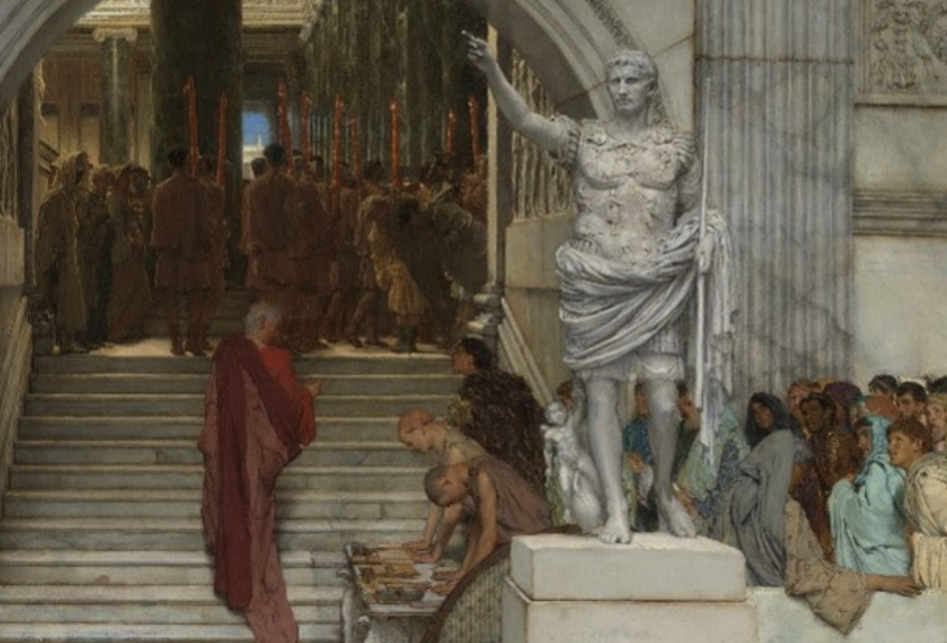The National Gallery has brought a new piece of art and if classical history is your thing then this will get you excited.
Well, folks, the National Gallery’s 200th-anniversary bash just got a whole lot fancier. They’ve gone and added “After the Audience” by Sir Lawrence Alma-Tadema (1836–1912) to their collection. That’s right, this is the third piece they’ve snagged this year to mark the big 2-0-0. Not just any piece, mind you—this is a colossal work of art that screams ambition, scale, and historical oomph, fresh for your eyes in Room 45 starting today, Thursday, 15 August 2024.
So, who is this Alma-Tadema bloke? Born in the Netherlands but a British darling by choice, he was the darling of the Victorian era, mesmerizing everyone with his pitch-perfect portrayals of Classical antiquity. While his work took a bit of a nap in the public eye posthumously, it’s been back in vogue since the groovy ’60s.
“After the Audience” takes us way back to Ancient Rome and showcases Agrippa, the son-in-law of Emperor Augustus, striding up the stairs of his villa after a long day of listening to petitioners from all corners of the Empire. The gifts from these petitioners are sprawled out in the foreground, making for quite the visual feast.
The National Gallery didn’t just stumble upon this masterpiece; it was a well-orchestrated acquisition from a private collection, thanks to the wheeling and dealing by Christie’s Private Sales. The purchase was made possible due to the generosity of Mrs. Martha Doris Bailey, Mr. Richard Hillman Bailey, Miss Gillian Cleaver, and Ms. Sheila Mary Holmes, alongside the ever-supportive National Gallery Trust. Cheers to them all!
This acquisition isn’t just about adding another pretty picture to the gallery walls. “After the Audience” brings Neoclassicism and Aestheticism into the spotlight—two major artistic movements that haven’t had much of a look-in at Trafalgar Square since the mid-20th century. Talk about filling a gap!
Now, let’s get a bit gossipy. Alma-Tadema painted this work as a showstopper to impress Sir William Armstrong, a bigwig engineer and industrialist from Newcastle. Armstrong had a thing for Alma-Tadema’s earlier piece, “An Audience with Agrippa,” and wanted something similar. But Alma-Tadema, always the artistic maverick, decided to depict Agrippa at the end of his audience, not the beginning. This tweak didn’t sit well with Armstrong, who felt personally snubbed and decided not to buy it. Despite this little drama, the painting was a hit when it first showed at the Royal Scottish Academy in 1879.
Dr. Gabriele Finaldi, Director of the National Gallery, had some glowing words about this new addition: “We continue to celebrate our 200th anniversary with our third acquisition this year. We can now represent in our collection the Dutch artist Lawrence Alma-Tadema, who, after settling in London, became a very important figure in the British art world of the late-19th century. We are grateful to the legacies of Martha Doris Bailey and Richard Hillman Bailey, Gillian Cleaver, and Sheila Mary Holmes, with the support of the National Gallery Trust, for enabling us to buy this outstanding picture.”
So, there you have it. “After the Audience” isn’t just a painting; it’s a slice of history, a nod to artistic movements of yore, and a testament to the enduring allure of Alma-Tadema’s work. Pop by Room 45 and let Agrippa and his entourage transport you back to the grandeur of Ancient Rome.
See the new acquisition in the National Gallery. London.
More information at nationalgallery.org.uk
Want to know a bit more about Lawrence Alma-Tadema?
Lawrence Alma-Tadema, OM, RA, RWS (1836-1912)
Born in Friesland, the Netherlands, Lawrence Alma-Tadema (1836-1912) attended the Academy of Fine Arts in Antwerp where he trained with the history painter Gustave Wappers (1803-1874). At the age of 16, he became an assistant to Louis Jan de Taeye (1822-1890), who advocated historical accuracy and an appreciation for depicting scenes from the Ancient World, both of which became key traits in Alma-Tadema’s work. He then joined Jan August Hendrik Leys (1815-1869), whose studio was one of the most highly regarded in Belgium at the time. Under Leys’ critical eye, Alma-Tadema improved and refined his skills, becoming especially adept at representing materials and textures such as hard metals and stone surfaces. His earliest major work The Education of the Children of Clovis (1861, private collection) was well received by critics and the public, eventually being presented to King Leopold of Belgium.

